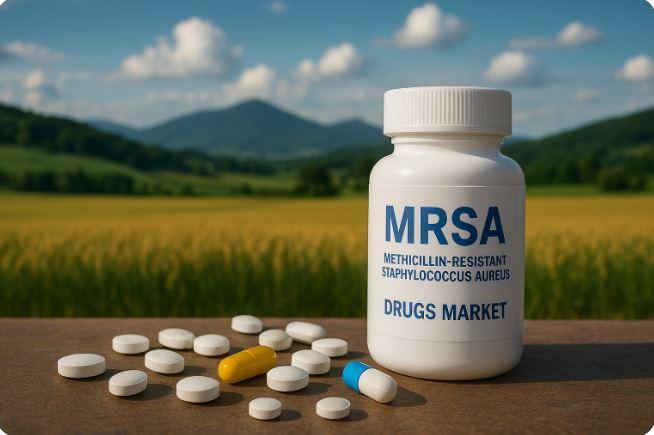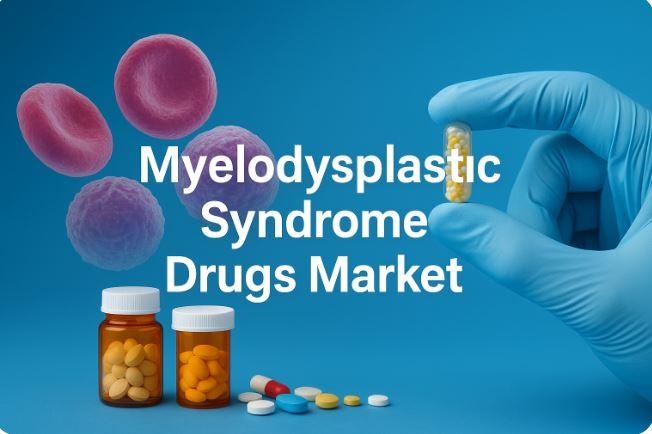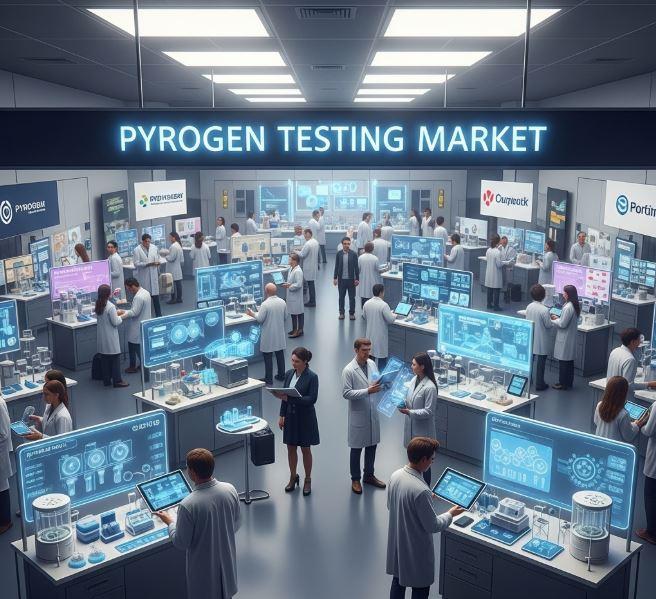Press release
Pyrogen Testing Market to Reach USD 2,813.1 million by 2032, Growing at a CAGR of 11.50% says Credence Research
Market OutlookThe Pyrogen Testing market size was valued at USD 519.4 million in 2018, increased to USD 1,170.6 million in 2024, and is anticipated to reach USD 2,813.1 million by 2032, at a CAGR of 11.50% during the forecast period. This growth reflects the growing importance of pyrogen testing in pharmaceutical, biotechnology, and medical device industries where product safety and compliance with stringent regulatory standards are paramount. Pyrogen contamination in injectable drugs and medical devices can trigger severe immune responses, making accurate detection methods critical to patient safety and global healthcare quality standards.
The significance of the market is further amplified in today's global context, where rising demand for biologics, vaccines, and advanced medical devices has placed a spotlight on quality control measures. The adoption of innovative testing methods, including in vitro alternatives, highlights the market's transition towards sustainability and animal-free testing practices.
Furthermore, regulatory agencies worldwide are encouraging the shift from traditional rabbit pyrogen testing to advanced monocyte activation tests (MAT). This regulatory push, coupled with technological innovation, is fostering widespread adoption.
The global demand for high-throughput, sensitive, and reliable testing solutions is accelerating investments in novel assays and automation-driven platforms. As pharmaceutical and biotechnology companies expand their production capacity, the demand for effective pyrogen detection methods is projected to remain robust. The increasing incidence of chronic diseases, expanding drug pipelines, and rising healthcare expenditure further underscore the market's growth potential. In essence, pyrogen testing has become a cornerstone of quality assurance in the life sciences sector.
Preview the report with a detailed sample and understand how it can benefit your business strategy. Request a free sample today https://www.credenceresearch.com/report/pyrogen-testing-market
Market Drivers
Rising Demand for Biologics and Vaccines
The growing pipeline of biologics, biosimilars, and vaccines is a major driver of the pyrogen testing market. Biologics are highly sensitive to contamination, necessitating stringent pyrogen testing during production and quality assurance. With increasing global vaccination programs and biologic approvals, demand for reliable testing solutions is on the rise. The COVID-19 pandemic highlighted the importance of rapid and precise safety testing, accelerating adoption of advanced assays. Furthermore, long-term government immunization campaigns are fueling consistent demand, ensuring that pyrogen testing remains an essential part of pharmaceutical production worldwide. The increasing prevalence of chronic and infectious diseases continues to boost vaccine development, creating long-term growth opportunities for pyrogen testing providers.
Regulatory Push for Alternative Methods
International regulatory bodies, particularly in Europe and North America, are advocating for a transition from traditional rabbit pyrogen tests to in vitro monocyte activation tests. This regulatory endorsement has encouraged manufacturers to adopt animal-free, sustainable methods, significantly driving innovation and adoption. Authorities such as the European Medicines Agency have established clear guidelines, further solidifying the industry's move toward MAT systems. These mandates not only support ethical testing but also improve efficiency by reducing reliance on live animal experiments. The strong regulatory backing provides companies with confidence in investing in advanced methods. As more countries align with these global standards, adoption is expected to accelerate across emerging markets.
Technological Advancements in Testing
The development of advanced assays, including recombinant Factor C tests and rapid MAT systems, has transformed pyrogen detection. These innovations reduce testing time, improve sensitivity, and minimize the need for animal testing, thereby addressing ethical concerns and enhancing operational efficiency for manufacturers. Rapid test kits now allow results in just a few hours, improving turnaround time for drug approvals. Additionally, automation of detection methods is enabling pharmaceutical companies to scale testing operations efficiently. Such improvements are particularly crucial in large biologics manufacturing facilities, where consistent and rapid testing is vital. The continuous stream of innovation ensures that pyrogen testing remains aligned with evolving industry needs.
Expanding Pharmaceutical and Medical Device Industry
The surge in pharmaceutical production, coupled with the growing medical device sector, has elevated the demand for pyrogen testing. With injectable drugs and implantable devices requiring rigorous testing, the market benefits directly from the expansion of these industries. Additionally, globalization of clinical trials has amplified demand for standardized pyrogen detection methods. Emerging markets such as India and China are becoming hubs for drug manufacturing, further driving regional testing demand. The medical device sector is also witnessing strong growth, with greater regulatory scrutiny on sterilization processes. This combined expansion creates an ongoing requirement for pyrogen testing across multiple industries.
Market Challenges
High Costs of Advanced Testing Systems
Advanced pyrogen detection technologies, including MAT systems and recombinant assays, are associated with high costs, limiting adoption among smaller firms. This acts as a barrier in emerging economies. The capital-intensive nature of these systems prevents widespread accessibility, particularly in resource-constrained settings. Even large-scale manufacturers face significant operational costs in transitioning to advanced systems. High upfront investment often delays adoption despite long-term benefits. Without cost optimization, adoption rates may remain uneven across regions.
Regulatory Complexity Across Regions
Although regulations encourage animal-free testing, variations across countries create complexities for manufacturers operating globally. This inconsistency hampers streamlined adoption of innovative solutions. For example, while Europe has set clear MAT guidelines, other regions are slower in establishing similar standards. Companies are forced to comply with diverse testing requirements, creating operational inefficiencies. This variation limits harmonization and delays global market adoption of uniform technologies. Addressing these inconsistencies remains a key challenge for the industry.
Ethical and Validation Concerns
While MAT and other advanced systems are gaining traction, questions regarding validation, reproducibility, and equivalence to traditional methods remain. Regulatory acceptance of newer assays requires extensive validation. Concerns exist regarding performance in specific drug categories, making manufacturers cautious. Furthermore, many laboratories are still more familiar with legacy methods like rabbit testing. This hesitation creates resistance to change, even when newer technologies are available. Continuous industry collaboration is needed to build trust and validation.
Competitive Pressure
The presence of several established players offering cost-effective testing solutions intensifies competition. Price sensitivity and the availability of multiple technologies create challenges for new entrants. Established companies leverage economies of scale, making it harder for smaller firms to compete. The competitive environment also limits pricing flexibility in emerging markets. With numerous companies offering similar services, differentiation becomes difficult. As a result, players must rely on continuous innovation to maintain an edge.
Market Opportunity
Adoption of Animal-Free Testing
The increasing emphasis on animal welfare presents a significant opportunity. Transitioning to MAT and recombinant assays aligns with global regulatory and ethical trends. Stakeholders across the pharmaceutical and biotechnology sectors are actively supporting this shift. Public awareness campaigns and stricter animal testing bans are further accelerating adoption. This creates a growing market for companies offering validated, animal-free solutions.
Automation and High-Throughput Solutions
Pharmaceutical companies are seeking rapid and scalable testing methods. Automated platforms that reduce assay time create immense growth potential for providers. These systems allow efficient processing of large sample volumes, meeting global production demands. High-throughput technologies improve operational efficiency, saving both time and costs. Vendors offering integrated automation solutions are expected to gain significant market traction.
Expansion in Emerging Markets
Rising healthcare expenditure and the growth of pharmaceutical manufacturing in Asia-Pacific and Latin America open lucrative opportunities for pyrogen testing adoption. Governments in these regions are investing heavily in drug development infrastructure. Domestic pharmaceutical companies are increasingly adopting international quality standards. This creates consistent demand for reliable pyrogen detection methods. Expansion in these markets allows global firms to tap into a rapidly growing customer base.
Collaborations and R&D Investments
Strategic partnerships among biotech firms, assay developers, and contract research organizations present avenues for innovation, expanding product portfolios, and accelerating global adoption. Collaborative efforts also enhance the speed of technological validation. Such alliances allow companies to leverage shared expertise and resources. They further drive awareness about advanced pyrogen testing methods. Increased R&D investments ensure a steady pipeline of innovative solutions to address industry needs.
Market Segmentation
By Product
• Instruments
• Reagents and Kits
• Services
By Test Type
• Rabbit Pyrogen Test (RPT)
• Limulus Amoebocyte Lysate (LAL) Assay
• Chromogenic Tests
• Turbidimetric Tests
• Gel Clot Tests
• Others
By End User
• Pharmaceutical & Biotechnology Companies
• Medical Devices Companies
• Others
By Geography
• North America
o U.S.
o Canada
o Mexico
• Europe
o UK
o France
o Germany
o Italy
o Spain
o Russia
o Belgium
o Netherlands
o Austria
o Sweden
o Poland
o Denmark
o Switzerland
o Rest of Europe
• Asia Pacific
o China
o Japan
o South Korea
o India
o Thailand
o Indonesia
o Vietnam
o Malaysia
o Philippines
o Taiwan
o Rest of Asia Pacific
• Latin America
o Brazil
o Argentina
o Peru
o Chile
o Colombia
o Rest of Latin America
• Middle East & Africa
o GCC Countries
o South Africa
o Rest of the Middle East and Africa
Regional Analysis
North America
North America dominates the market, supported by robust pharmaceutical manufacturing, stringent regulations, and high healthcare expenditure. The U.S. leads due to advanced biopharmaceutical research. The region's early adoption of innovative technologies gives it a competitive edge. Regulatory authorities such as the FDA strictly monitor quality control measures. Canada and Mexico also contribute with growing biotech industries. This strong ecosystem makes North America a global leader in pyrogen testing.
Europe
Europe plays a critical role in driving animal-free testing, particularly through regulatory mandates promoting MAT adoption. Germany, France, and the UK are key contributors. The region is actively phasing out rabbit pyrogen tests, aligning with ethical standards. Strong pharmaceutical production across multiple countries boosts demand for advanced assays. Collaboration between industry and regulatory authorities further accelerates adoption. Europe continues to set the benchmark for global testing standards.
Asia Pacific
Asia Pacific is experiencing rapid growth due to expanding pharmaceutical manufacturing in China, India, and Japan. Rising healthcare investments further fuel adoption. Regional governments are supporting biopharmaceutical innovation with favorable policies. Increasing export-oriented drug manufacturing has boosted demand for internationally compliant testing solutions. Asia Pacific is becoming a global hub for clinical trials and biologics. Its growing importance makes it one of the fastest-growing regional markets.
Latin America
Latin America shows steady growth, driven by expanding biologics production in Brazil and Argentina. Increasing government support enhances regional adoption. Partnerships with multinational companies are helping strengthen industry standards. Domestic pharmaceutical industries are increasingly aligning with global regulatory requirements. Chile and Colombia are also emerging as important contributors. This regional momentum ensures a gradual but steady increase in demand.
Middle East & Africa
The Middle East & Africa market is growing moderately, with GCC countries leading due to expanding healthcare infrastructure. South Africa represents another emerging hub. Investments in healthcare modernization support the demand for testing services. Pharmaceutical imports and manufacturing initiatives are increasing. However, limited resources slow adoption of advanced systems. Despite challenges, gradual improvements in infrastructure will strengthen market growth.
Top Companies
• Charles River Laboratories, Inc.
• Merck KGaA
• Thermo Fisher Scientific, Inc.
• Wako Chemicals USA, Inc.
• WUXI Pharmatech, Inc.
• Seikagaku Biobusiness Corporation
• MiCAN Technologies Inc.
• Lonza
• Ellab A/S
• GenScript
Recent Developments
• In 2025, Thermo Fisher Scientific strengthened its portfolio of pyrogen and endotoxin testing products, including recombinant Factor C assays. The company is advancing automation and high-throughput testing solutions to meet global regulatory requirements.
• In June-July 2024, FUJIFILM Wako Pure Chemicals launched LumiMATTM, a next-generation MAT kit based on human NOMO-1 cells. This kit reduces assay time to five hours, offering rapid and highly sensitive results.
• In October 2023, Lonza introduced two rapid MAT systems-PyroCell MAT Rapid System and PyroCell MAT HS Rapid System-that cut testing times from two days to two hours, significantly reducing reliance on animal testing.
• In June 2022, Merck KGaA rolled out the PyroMAT® system, supporting the transition from rabbit pyrogen tests to MAT in Europe, aligning with the region's animal testing reduction goals.
Reasons to Purchase this Report:
• Gain in-depth insights into the market through both qualitative and quantitative analyses, incorporating economic and non-economic factors, with detailed segmentation and sub-segmentation by market value (USD Billion).
• Identify the fastest-growing regions and leading segments through analysis of geographic consumption trends and the key drivers or restraints affecting each market.
• Track the competitive landscape with updated rankings, recent product launches, strategic partnerships, business expansions, and acquisitions over the past five years.
• Access comprehensive profiles of key players, featuring company overviews, strategic insights, product benchmarking, and SWOT analyses to assess market positioning and competitive advantages.
• Explore current and projected market trends, including growth opportunities, key drivers, challenges, and limitations across developed and emerging economies.
• Leverage Porter's Five Forces analysis and Value Chain insights to evaluate competitive dynamics and market structure.
• Understand how the market is evolving and uncover future growth opportunities and emerging trends shaping the industry.
Related Reports -
Microbiome Sequencing Services Market- https://www.credenceresearch.com/report/microbiome-sequencing-services-market
Cervical Dysplasia Diagnostic Market - https://www.credenceresearch.com/report/cervical-dysplasia-diagnostic-market
Follow Us:
https://www.linkedin.com/company/credenceresearch/
https://www.facebook.com/CredenceResearch
Credence Research Europe LTD - 128 City Road, London, EC1V 2NX, UNITED KINGDOM
Credence Research is a viable intelligence and market research platform that provides quantitative B2B research to more than 2000 clients worldwide and is built on the Give principle. The company is a market research and consulting firm serving governments, non-legislative associations, non-profit organizations, and various organizations worldwide. We help our clients improve their execution in a lasting way and understand their most imperative objectives.
This release was published on openPR.
Permanent link to this press release:
Copy
Please set a link in the press area of your homepage to this press release on openPR. openPR disclaims liability for any content contained in this release.
You can edit or delete your press release Pyrogen Testing Market to Reach USD 2,813.1 million by 2032, Growing at a CAGR of 11.50% says Credence Research here
News-ID: 4146710 • Views: …
More Releases from Credence Research Inc.

Nutraceutical Ingredients Market to Reach USD 126,749.2 million by 2032, Growing …
Market Overview
The global Nutraceutical Ingredients Market is witnessing substantial growth, reflecting the increasing global emphasis on preventive healthcare and wellness. The Global Nutraceutical Ingredients Market size was valued at USD 63,746.9 million in 2018 to USD 87,650.2 million in 2024 and is anticipated to reach USD 126,749.2 million by 2032, at a CAGR of 4.69% during the forecast period. This growth is being propelled by consumer awareness regarding the link…

Methicillin-Resistant Staphylococcus Aureus (MRSA) Drugs Market to Reach USD 3.2 …
Market Overview
The Methicillin-Resistant Staphylococcus Aureus (MRSA) Drugs Market plays a critical role in addressing drug-resistant bacterial infections, which pose a significant global health challenge. The market was valued at USD 2.21 billion in 2024 and is anticipated to reach USD 3.29 billion by 2032, reflecting a robust CAGR of 5.11% during the forecast period. MRSA remains one of the leading causes of hospital-acquired and community-acquired infections, necessitating effective pharmaceutical interventions.
The…

Myelodysplastic Syndrome Drugs Market to Reach USD 2,057.7 million by 2032, Grow …
Market Overview
The Myelodysplastic Syndrome Drugs Market size was valued at USD 1,120 million in 2024 and is anticipated to reach USD 2,057.7 million by 2032, at a CAGR of 7.9% during the forecast period (2024-2032). Myelodysplastic syndromes (MDS) represent a group of hematologic disorders characterized by ineffective hematopoiesis, leading to abnormal blood cell formation and increased risk of acute myeloid leukemia. The rising prevalence of these syndromes among the aging…

Aluminum Honeycomb Core Market to Reach USD 3,446.92 million by 2032, Growing at …
Market Overview
The Global Aluminum Honeycomb Core Market size was valued at USD 1,282.78 million in 2018, expanding to USD 1,960.93 million in 2024, and is projected to reach USD 3,446.92 million by 2032, registering a CAGR of 6.80% during the forecast period. This consistent growth reflects the increasing demand for lightweight, high-strength materials across various industries, including aerospace, automotive, and construction. The aluminum honeycomb core's unique hexagonal structure offers superior…
More Releases for MAT
Global Field Mat Sales Market Size by Application, Type, and Geography: Forecast …
USA, New Jersey- According to Market Research Intellect, the global Field Mat Sales market in the Internet, Communication and Technology category is projected to witness significant growth from 2025 to 2032. Market dynamics, technological advancements, and evolving consumer demand are expected to drive expansion during this period.
Due to rising demand from a variety of industries, including construction, oil & gas, agriculture, and military applications, the field mat sales market is…
Crane Mats Market Key Players - Matrax, Beasley Forest Products, Garnett Wood Pr …
United States, New Jersey: Crane Mats Market size was valued at USD 713.26 Million in 2021 and is projected to reach USD 1096.37 Million by 2030, growing at a CAGR of 4.89% from 2023 to 2030.
The Crane Mats Market has been experiencing significant growth over the past few years, driven by technological advancements, shifting consumer preferences, and increasing investment from both public and private sectors. This market encompasses a wide range…
Industrial Anti-static Mat Market to see Booming Business Sentiments | 3M. Co, A …
The Latest published market study on Industrial Anti-static Mat Market report provides an overview of the current market dynamics as well as what our survey respondents- all outsourcing decision-makers- predict the market will look like in 2031.The study breaks the market by revenue and volume and price history to estimate the size and trends analysis and identify gaps and opportunities.This report provides impactful insights for our clients including a vast…
BAZMAT ANTI-SLIP MAT REVIEW: IS THIS ANTI SLIP MAT LEGIT? ( USA AND CANADA REVIE …
Slippery surfaces can pose a significant risk, causing accidents and injuries in our daily lives. Whether it's in the kitchen, bathroom, or even at the office, a reliable solution to prevent slips and falls is crucial. This is where the Bazmat Anti-Slip Mat comes in. Engineered with advanced technology and superior materials, this anti-slip mat offers a practical and effective way to enhance safety and stability in any environment.
Designed to…
Glass Mat Market
The glass mat market size is expected to grow from USD 1.3 billion in 2022 to USD 2.2 billion by 2028 growing at a CAGR of 8.6% between 2023 to 2028.The glass mat market is mainly driven by increasing use of glass mat in the construction & infrastructure and industrial applications end-use industries. Automation in various industries is increasing preference for using glass fabrics, which is among the key restraints…
Plastic Protection Mat market: Complete Company Profiling of Dominant Players | …
"QY Research holds tons of experience in offering comprehensive and accurate analysis of global as well as regional markets. The report presented here is an industry-best compilation of detailed and quality research studies on the global Plastic Protection Mat market. It provides SWOT, PESTLE, and other important types of analysis to give a real and complete picture of the current and future scenarios of the global Plastic Protection Mat market.…
